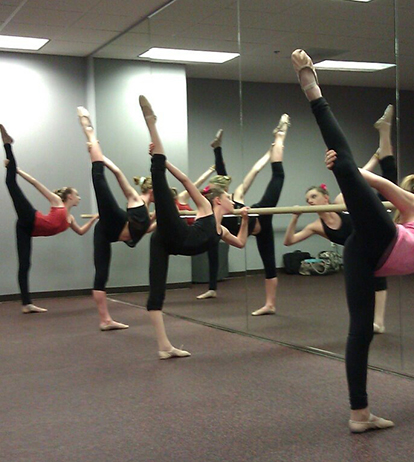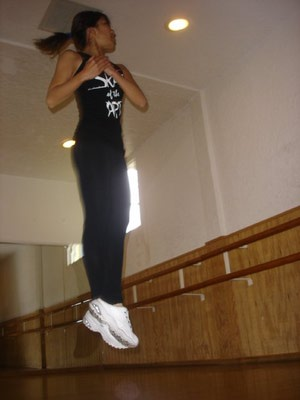Register Now for Winter 2026 CanSkate!

Off–Ice Training by Stage as per the LTAD Model
Learn to Skate Stage (age: females 3-8; males 3-9)
In the Learn to Skate Stage, "(s)katers should be exposed to many different sports or physical activities all year round to develop overall physical literacy and good health. As much as possible, physical activities all year round to develop overall physical literacy and good health. As much as possible, activities should help to develop agility, coordination, balance, speed, flexibility, etc. The specific types of activities will depend on the specific socio-cultural context of the athlete but coaches, parents and clubs are encouraged to explore the different opportunities that exist in their communities including structured and unstructured play. Ideally, these activities should be participated in one to two hours per week, 20 to 40 weeks per year."
Learn to Train Stage (age: females 7-11; males 8-12)
"In the Learn to Train Stage, skaters should participate in a variety of other sports and activities to become better athletes and more well rounded skaters in both body and mind. As in the Learn to Skate stage, the specific types of activities will depend on the specific socio-cultural context of the athlete but coaches, parents, and clubs are encouraged to explore the different opportunities that exist in their communities. That said, at this stage of development more sport-specific activities such as off-ice technical jumping classes should be introduced to help with body development and awareness and the understanding of movement patterns. It is important to note that the proportion of on-ice to off-ice activity is also seasonal and subject to periodization. Knowledge of the intentions behind warm-up, cool-down, stretching, nutrition, hydration, and rest and recovery should be encouraged.
At point of entry into Learn to Train, skaters should be participating in one to two hours of sport-specific off-ice activity each week, for 20 to 40 weeks of the year. At point of exit from Learning to Train, skaters should be participating in three hours of formalized off-ice activity each week, 44 weeks of the year."
Learn to Compete Stage (age: females 9-13; males 10-14)
"At the Learn to Compete stage, athletes should be participating in off-ice activities three to five days per week, and 46 to 48 weeks of the year. Each session should be approximately one hour in length and should include some type of dance and movement classes for both males and females. Strength training sessions for females are of particular importance. Sessions should focus on exercises that utilize body weight, medicine balls, and exercise/stability balls.
Stamina also needs to be a focus for both females and males and cardiovascular conditioning sessions should be introduced. We encourage athletes at this level to remain involved in another sport outside of figure skating, but on a minimal commitment level."
Train to Compete Stage (age: females 10-16; males 11-17)
"Athletes should be warming up at minimum 30 minutes per day, but optimally one hour per day. This should include a full body warm-up, off-ice jumps and lifts (as applicable), and mental preparation. It should also include 30 minutes of stretching/cool-down at the end of the day. Each day should include a review of short, medium and long-term goals.
In addition to warm-up and cool-down periods, athletes optimal off-ice activity at this level ranges from four hours (for younger ages) to 13 hours (for older athletes). All off-ice activity should be focused on enhancing on-ice performance. This might include off-ice jump classes, dance, movement and theatre classes, core strength conditioning, flexibility work, cardiovascular enhancement and overall strength training."
Learn/Live to Win Stage (age: female 13-19; male 14-21) 15 +
"All athletes should be participating in 10 to 14 hours of off-ice training each week, for 48 weeks of the year. In general, off-ice training needs to have the same commitment as on-ice training and needs to include short, medium and long-term goals. Specific work done off-ice must reflect the principles of periodization and take into account the age, growth and development of the athlete. Furthermore, at this level off-ice programs should be very sport-specific and based on the individual needs and fitness test results of the athlete.
Ballet/dance classes should be incorporated into the training plan for all disciplines due to the positive crossover effect with skating. Athletes will ideally participate in two to five ballet classes per week, depending on need and discipline. Strength and conditioning classes are also critical at this stage and should be scheduled five days per week. Off-ice jumping classes should be continued for singles and pair skaters and incorporated into off-ice warm-up sessions. Pair skaters need to be performing lifts off the ice every day. Ice dancers must incorporate flexibility classes and dance classes different from ballet (e.g. ballroom, contemporary, lyrical, jazz, hip hop, Latin, etc.) All disciplines would benefit from acting or theatre classes.
As part of rest and recovery, regularly scheduled massage and/or chiropractic appointments are essential. All athletes need to continue to develop and consolidate the mental skills required for this level of competition. Pair and ice dance teams need to foster communication and conflict resolution skills."
Active for Life (any age)|
Keep in Mind Please keep in mind that Skate Canada’s LTADM outlines ideal progression in our sport. There will always be exceptions to the “norm.” As such, the LTADM should be viewed as a guide or framework that has flexibility and fluidity. Not every athlete is going to progress through every stage of the model and that’s okay! An athlete’s exit stage will be determined by his/her own goals in the sport. Our responsibility is to make sure that wherever they exit, our members have acquired all the skills that our sport can provide. Of course, it remains our hope that athletes will remain in our sport as long as possible – and indeed, for life. |
For a full copy of this guide please download: Skate-Canada-LTAD-Model-EN.pdf
* Excerpt in part from In Pursuit of Personal Excellence: Skate Canada's Guide to Long-Term Athlete Development
In Pursuit of Excellence: Skate Canada’s Guide to Long-Term Athlete Development is for the benefit of all members and is rooted in the philosophy of “skating for life” and being active for life.
** Exerpt from Carl M. Poe Off-Ice Training for Figure Skating
The following is an outline of some of the guidelines for off-ice training and figure skating.
I. Why should skaters perform off-ice training?
For enhancing skating skills and performance and to reduce and/or prevent skating related injuries.
II. What are the Components of Off-Ice/On-Ice Training?
-
Warm-up/Cool-downwithFlexibilityTraining
-
StrengthTraining
-
Jump/Plyometric Training
-
Aerobic and Anaerobic Endurance Conditioning
-
Periodization of all components
III. Enhancing Skating Skills and Performance through Strength, Power, Flexibility and Endurance Conditioning Training May Allow for the Following:
-
Enhanced posture or body positioning on the ice
-
Increased stroking speed or power
-
Increased jump height
-
Increased rotation speed of jumps
-
Increased speed of jump check-outs
-
Improved strength of jumping landing
-
Improved positioning or strength of holding spin position
-
Improved upper-body strength for choreography movements
-
Enhanced cardiovascular condition to complete short and long program with more efficiency
** exerpt from Carl M. Poe Off-Ice Training for Figure Skating
Carl M. Poe, M.S., C.S.C.S., 1182 Bristol Lane Buffalo Grove, IL 60089 H: 847.955.1543
F: 847.955.1543
Cell: 847.812.8458 E-Mail: OffIceStr@aol.com
Carl M. Poe, M.S., CSCS has designed strength & conditioning programs and has trained skaters for the previous ten years. Poe has assisted at the U.S. Figure Skating elite sports science camps, Team 2010, National Training Camp, and the Regional Training camps. He has also presented at the PEP seminars for the Professional Skaters Association (PSA)
Ballet/Pilates/Flexibility for Figure Skaters

Lead Facilitator – Elina Viola
Elina Viola is a former National and International level singles and pairs skater. She has performed in numerous ice shows around the world including “Nutcracker on Ice” and “Ice Follies.” She is also a level 2 certified Skate Canada coach and has taught for 20 years in Canada, specializing in choreography, spins, on-ice movement classes, and more. Elina has facilitated a variety of Skate Canada off-ice camps.
Elina is a certified yoga, Zumba, barre, instructor and facilitator of NeuroKinetic Therapy. She has significant theatrical experience, working as a stand-in for mainstream actresses with the I.A.T.S.E Union for film, and has performed in several theatre stage productions. Elina loves movement and teaching others, and she shares the joy, artistry, and zen of healthy activities.
Off-Ice Jump and Spin Technique Classes, and Mental Preparation |
 |
Off ice jump and spin technique classes, in addition to mental preparation/visualization techniques are addressed by a skater's head coach and their recommendations are based on a skater's goals and stage of training. Please refer to the Long Term Athlete Development document for further information.
In Pursuit of Excellence: Skate Canada’s Guide to Long-Term Athlete Development is for the benefit of all members and is rooted in the philosophy of “skating for life” and being active for life.

